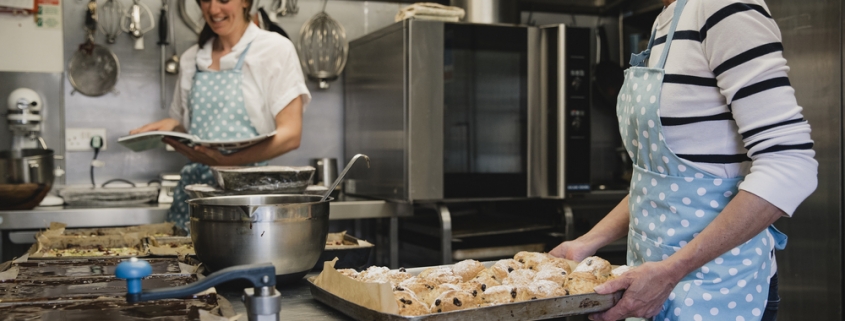Creating a Food Allergy-Friendly Kitchen
A food allergy-friendly kitchen will open doors for more guests to visit your bakery or restaurant.
According to Food Allergy Research and Education (FARE), up to 15 million Americans have food allergies. Every three minutes, a food allergy reaction results in an emergency room visit. These allergies are growing in frequency, and food providers must be cognizant of the risks associated with cross-contact, making every effort to create a food allergy-friendly kitchen.
The Top Allergens
Milk, wheat, soy, peanuts, eggs, shellfish and sesame are a few of the top allergens many of your customers may react to, but over 170 foods have been reported to cause reactions.
It Starts with Ingredient Sourcing
The first step toward reducing the risk of food allergy reactions in your bakery or restaurant is by sourcing ingredients from facilities free of allergens.
While it might not be possible to purchase all products from these types of manufacturing facilities, it is key to make a note of the products you use that are not certified allergen-free, and communicate this to your customers. Ingredient due diligence and transparency are extremely important for a safe, food allergy-friendly kitchen.
Food Storage and Cooking Equipment
All products made free from allergens must be prepared using a separate set of kitchen pans, utensils, bowls and surfaces. You also need a dedicated mixer specifically for this purpose. Ingredients should be stored separately as well, and once goods are made, they should be stored in a different area of the kitchen too.
Cross-Contact Guidelines to Follow
Cross-contamination is a commonly used word, but it typically means food is contaminated with bacteria. Cross-contact refers to when food is contaminated by allergens.
Avoiding cross-contact can be difficult for a staff that is not fully trained on these procedures, so all guidelines must be communicated to each employee.
- Know exactly which allergens are in which menu items.
- Ask each customer before ordering if they have any food allergies.
- When a customer orders an allergen-free item, hand-deliver it to avoid cross-contact.
- Always use designated equipment and utensils for allergen-free cooking and baking.
- Wash hands or change gloves before preparing allergen-free food.
Take the Next Step
Would you and your staff like to receive further training on how to create an allergen-free environment? There are many professional courses and classes that provide in-depth reviews on kitchen procedures if creating a food allergy-friendly kitchen is your goal. Contact Dough Tech for our best recommendations on mixers that work best with a range of substitute ingredients.




